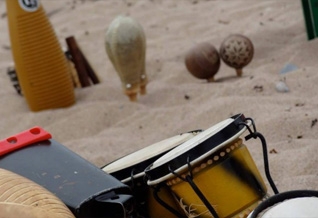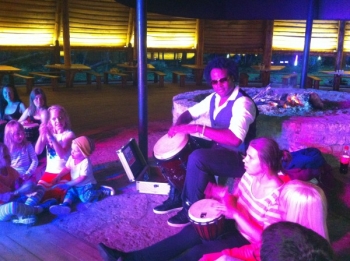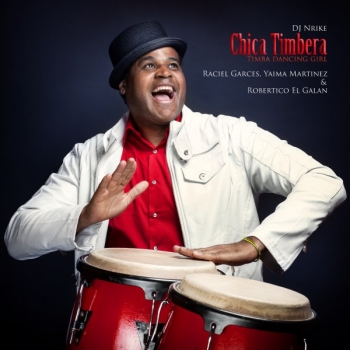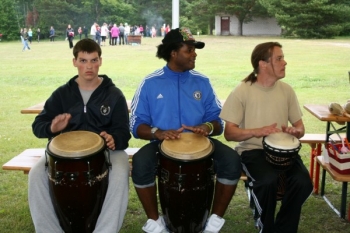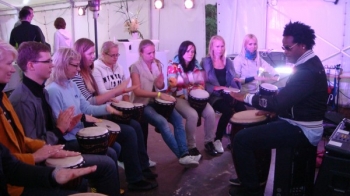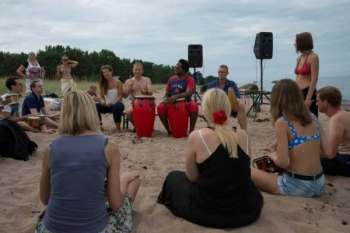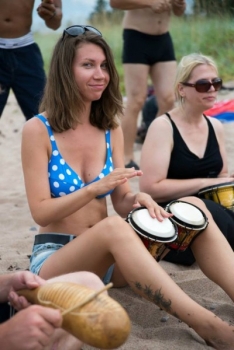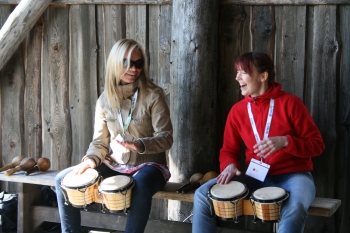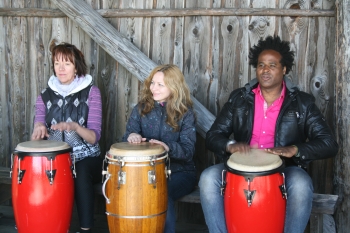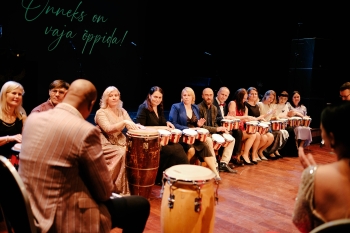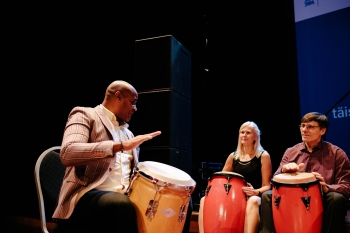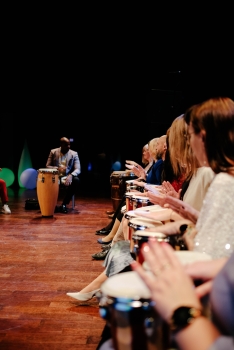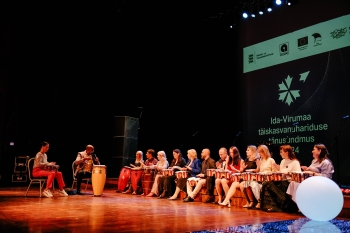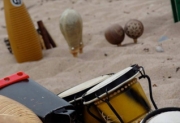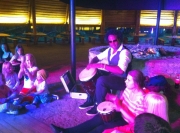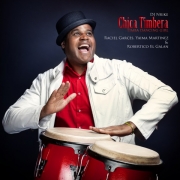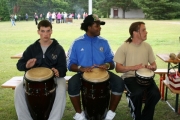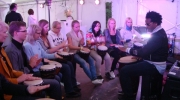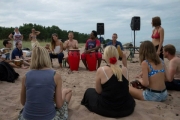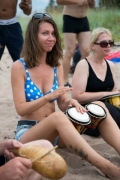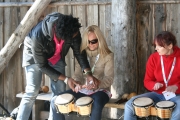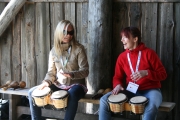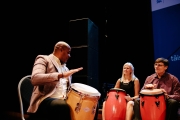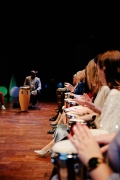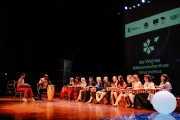DRUMS WORKSHOP
Welcome to our Cuban percussion workshop!
Discover our drum workshop, offering a unique and rhythmic experience for various events. Whether you want to spice up your seminar, add refreshment to a corporate party, inject some fun into your evening event, or provide cool activities for a children's party, our Cuban percussion workshop is perfect for all occasions, bringing an energetic and lively atmosphere.
Why Choose Our Drum Workshop?
-
Live Music and Rhythms: Immerse yourself in the Cuban rhythm world, where vibrant beats bring vitality and positive energy to your event. Our experienced drum instructor, Enrique, will guide you through various percussion instruments and rhythms that perfectly complement the mood of your event.
-
Versatility: The drum workshop can be organized as a standalone event or combined with other activities we offer. Interested in dance lessons, cigar rolling workshops, or making Cuban cocktails? We have a wide range of options to create a tailored combination of activities for you.
-
Teamwork and Collaboration: The drum workshop promotes teamwork and collaboration. Drumming together helps enhance team bonding, develop communication skills, and strengthen unity.
-
Memorable Experience: Participants will not forget the energy and joyful atmosphere of the drum workshop. It's an event that leaves a lasting impression and will be gladly shared with others.
Ready to add that special shine to your event with our Cuban percussion workshop? Contact us to discuss how we can help you create an unforgettable experience that will be memorable for you and your participants.
Come and let the rhythms take you away – our drum workshop is more than just an event; it's an experience that brings people together and creates unforgettable moments!
Bongos
Are an Afro-Cuban percussion instrument consisting of a pair of small open bottomed drums of different sizes. In Spanish the larger drum is called the hembra(female)and the smaller the macho(male).
The origin of the bongo is largely unclear. Its use was first documented in the Eastern region of Cuba known as the "Oriente", during the 19th century, where it was employed in popular music styles such as Cuban son.
Conga
(Or tumbadora as the instrument is called in Cuba) is a tall, narrow, single-headed. The Cuban conga is staved, like a barrel. They are used in the Carnival rhythm called conga(or conga de comparsa), and is the principal instrument in rumba. Congas are now very common in Latin music, including salsa music, merengue, reggae, etc.
Claves
Are a consisting of a pair of short thick dowels. Traditionally they are made of wood, typically rosewood, ebony or grenadila. When struck they produce a bright clicking noise. Claves are sometimes hollow and carved in the middle to amplify the sound.
Claves are very important in Cuban music. They are often used to play a repeating rhythmic figure throughout a piece, known as clave, a key pattern (or guide-pattern, timeline patter that is also found in African and Brazilian music
Maracas
Sometimes called rumba shakers, are originated in Latin America. Players hold them by their handles, usually in pairs, and shake them. Traditional maracas consist of hollow balls made from dried gourd shell or coconut shell filled with seeds or dried beans and mounted on a wooden handle. Modern maraca balls are also made of leather, wood, or plastic.
Often, one ball is pitched high and the other low. There is archaeological evidence of clay maracas in Colombia from 1500 years ago. The word maraca is thought to have come from the Tupi language of Brazil, where it is pronounced 'ma-ra-KAH'. The leather maracas were introduced in 1955 by a Venezuelan percussionist.
Guiro
Consisting of an open-ended, hollow gourd with parallel notches cut in one side. It is played by rubbing a stick or tines along the notches to produce a ratchet-like sound.
The guiro is commonly used in Latin American music, and plays a key role in the typical rhythm section of important genres. Playing the güiro usually requires both long and short sounds, made by scraping up and down in long or short strokes.
The güiro, like the maracas, is often played by a singer. Another type of guiro, is the reco-reco is made of a cylindrical metal box that encases two or three steel springs. These are stretched over a lid, against which a metal stick is rubbed.
Cowbell
Is used in various styles of music including salsa. It is named after the similar bell historically used by herdsmen to keep track of the whereabouts of cows. While the cowbell is commonly found in musical contexts, its origin can be traced to freely roaming animals. In order to help identify the herd to which these animals belonged, herdsmen placed these bells around the animal's neck. As the animals moved about the bell would ring, thus making it easier to know of the animal's whereabouts. Though the bells were used on various types of animals, they are typically referred to as "cowbells" due to their extensive use with cattle. In several parts of the world (notably in West Africa) pairs or trios of clapperless bells are joined in such a way that they can be struck separately or clashed together. The Brazilian name for these is "agogo" bells. Cylindrical wood blocks played in the same way are also called "Agogo". In Cuban music the cowbell is called cencerro and often played by the same player as the bongos.





